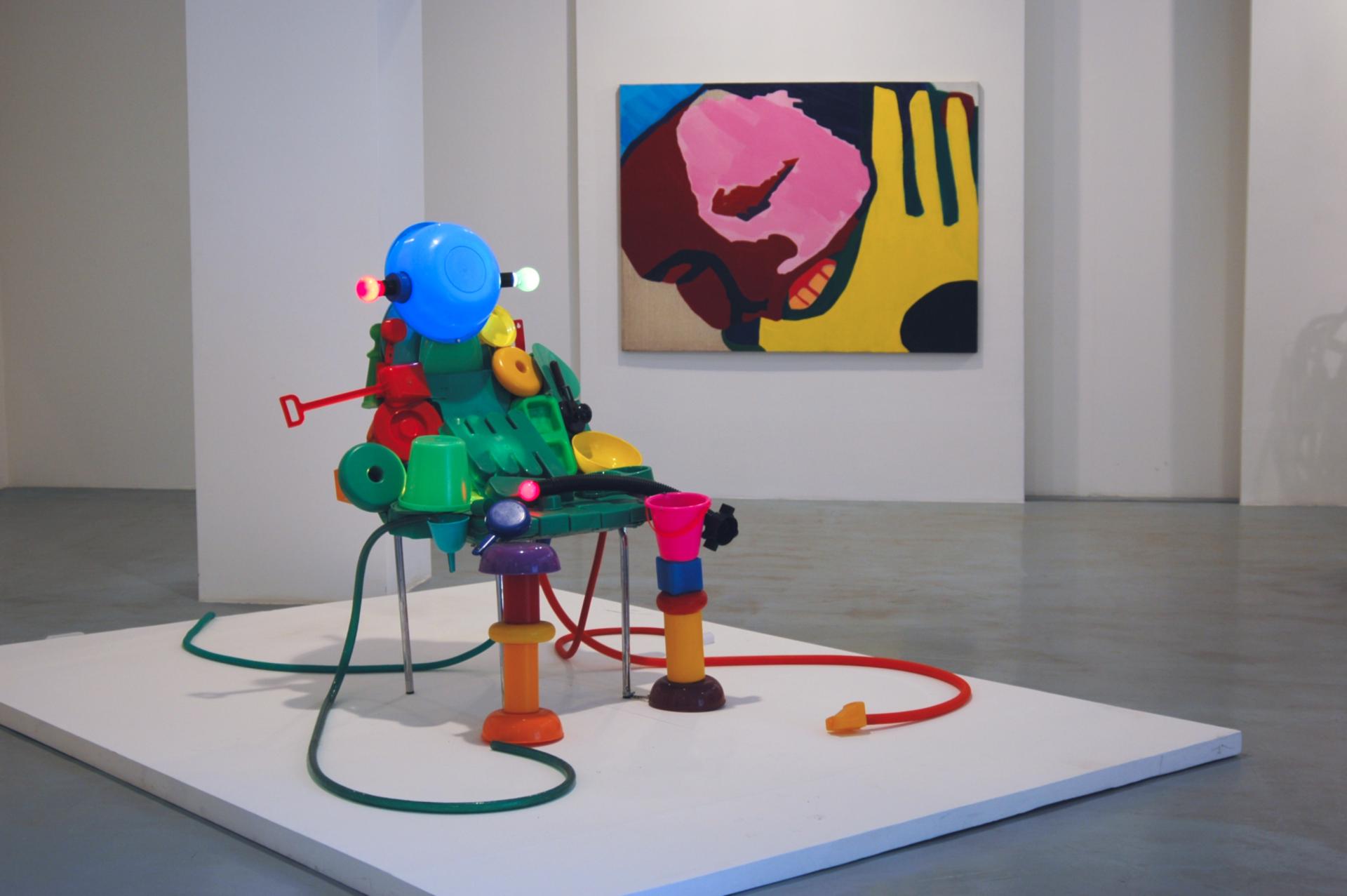
The Stella Art Foundation opens up a new 2005/2006 season with the exhibition of Natalia Turnova, well-known Moscow artist. The exposition contains a new series of works devoted to the theme of human aggression. It reveals both paintings conducted in expressive colorful manner typical for the artist and large-scale objects compiled from trivial utilities and household objects. The latter ones are exposed to sound through tape players mounted into their structure. Thus, the “musical play” of colors turns into a physical sound of urban audio-background, whereas lines and spots on paintings’ surface degenerate into a framework of sculptures with dimensions of volume and space.
Natalia Turnova is a rare example of artist on Moscow contemporary art scene who communicates the meaning of art-pieces directly through plastic language. Therewith, her messages are always clear and strenuously concise. The heroes of her works are far from being not remote from the viewer. Their images are of close-up and very close-up view, to the extent that phrases of the author’s message turn into words or parts of them. The viewer sees not only what the author wants to say but how she says it, what elements and emotional strains her speech contains. The process of creative thinking itself is disclosed, and therefore if we wish to we can understand it and enter the dialogue with the artist. In this very case this dialogue is about dialectics of aggression, its hidden nature and its evident striking demonstrations.
Vladimir Levashov
“Transition from the outer static of rest and piece to dynamics of anger and violence can be instantaneous and often has no obvious reasons. But in fact, the reason always exists. It is always an attempt to solve inner problems at the cost of external ones. What is aggression? It is unsightly attempt to actualize the unrealized part of yourself for various reasons, as well as to find someone who is guilty in your own incapacity. Therefore, in order to become aggressive one needs another person to be around... The other is needed only in order for the feeling to come forth. A weak person who was unable to frame his inner self will not be able to bridle his own aggression. Aggression is always a sign of inner weakness. The victim of aggression is stronger in these terms. Yet how is it possible to decompose the condition of adversaries into separate components? How is it possible to understand what is happening in the consciousness embraced by passion in each and every moment? Do passions rule the world, or do weaknesses do instead?”
Natalia Turnova